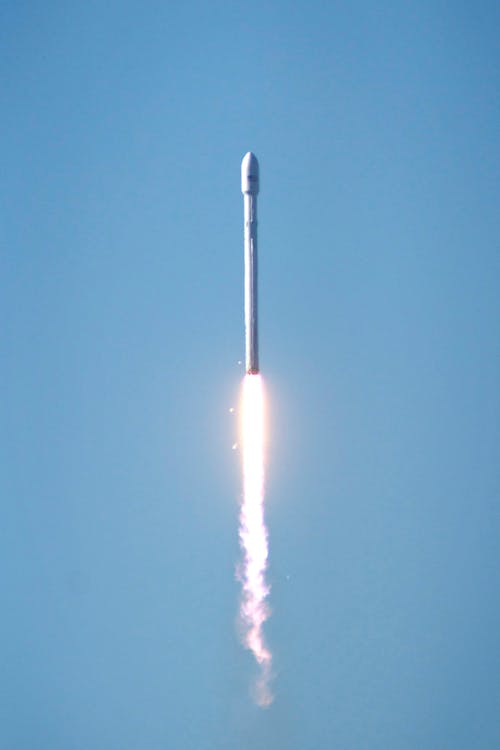Angular acceleration definition
The rotational movement of an object is usually described by a physical quantity called angular velocity. It measures the angle by which an object rotates in a specific time. For example, imagine that a carousel in an amusement park performs full rotation within ten seconds. Its angular velocity is one rotation (360°) per ten seconds or 36° per second.
Let's assume that our carousel starts to rotate faster and faster, not 36° but 50°, then 64° per second. Angular acceleration describes this rate of change of angular velocity and is caused by torque.
Angular acceleration formula
Angular acceleration can be computed with our angular acceleration calculator in two different ways. We are using the below angular acceleration equations:
Angular acceleration is given by:
\[ \alpha = \frac{{\omega_2 - \omega_1}}{{t}} \]
or alternatively:
\[ \alpha = \frac{a}{R} \]
Where:
- \(\alpha\) – Angular acceleration
- \(\omega_1\) – Initial angular velocity
- \(\omega_2\) – Final angular velocity
- t – Time of change of angular velocity
- a – Tangential acceleration
- R – Radius of the circle (or the distance from an axis of rotation)
Tangential acceleration acts as a linear acceleration, which is perpendicular to the radius of the circle.
Example
Calculating Angular Acceleration
Angular acceleration is the rate at which an object's angular velocity changes over time. It is a vector quantity, meaning it has both magnitude and direction. The goal of calculating angular acceleration is to determine how quickly an object is speeding up or slowing down rotationally.
The general approach to calculating angular acceleration includes:
- Identifying the initial and final angular velocities of the object.
- Knowing the time taken for the change in angular velocity.
- Applying the formula for angular acceleration to calculate the result.
Angular Acceleration Formula
The general formula for angular acceleration is:
\[ \alpha = \frac{{\omega_f - \omega_i}}{{t}} \]Where:
- \(\omega_f\) is the final angular velocity of the object (in radians per second, rad/s).
- \(\omega_i\) is the initial angular velocity of the object (in radians per second, rad/s).
- t is the time it takes for the change in angular velocity (in seconds, s).
Example:
If a wheel speeds up from 5 rad/s to 20 rad/s in 3 seconds, the angular acceleration is:
- Step 1: Subtract the initial angular velocity from the final angular velocity: \( \omega_f - \omega_i = 20 - 5 = 15 \, \text{rad/s} \).
- Step 2: Divide by the time: \( \alpha = \frac{{15}}{{3}} = 5 \, \text{rad/s}^2 \).
Angular Acceleration with Changing Direction
Angular acceleration can also occur when an object changes direction. If the angular velocity of an object changes direction but not its angular speed, this is still considered angular acceleration. For example, an object rotating in a circle constantly changes direction, resulting in angular acceleration even though the angular speed remains constant.
Example:
If a car turns a corner while maintaining a constant angular speed of 60 rad/s, the car is still experiencing angular acceleration because its angular velocity is changing direction, even though the angular speed is constant.
Real-life Applications of Angular Acceleration
Calculating angular acceleration has many practical applications, such as:
- Determining how quickly a rotating object can speed up or slow down (e.g., in machinery or vehicles).
- Calculating the angular acceleration of objects in rotational motion for physics experiments (e.g., a rotating disk or flywheel).
- Measuring angular acceleration in sports (e.g., calculating the rotational acceleration of a gymnast during a vault).
Common Units of Angular Acceleration
SI Unit: The standard unit of angular acceleration is radians per second squared (\( \text{rad/s}^2 \)).
Angular acceleration can also be expressed in other units, such as degrees per second squared (\( \text{°/s}^2 \)), but the SI unit is commonly used in most calculations.
Common Operations with Angular Acceleration
Uniform Angular Acceleration: When angular acceleration is constant over time (e.g., an object in uniform rotational motion).
Variable Angular Acceleration: When the rate of change in angular velocity is not constant (e.g., a car wheel accelerating or decelerating at varying rates).
Negative Angular Acceleration: Also called angular deceleration, it occurs when an object slows down rotationally over time (e.g., a fan slowing down).
| Problem Type | Description | Steps to Solve | Example |
|---|---|---|---|
| Calculating Angular Acceleration from Angular Velocity | Finding the angular acceleration when given the initial and final angular velocities and time. |
|
For a wheel that speeds up from \( 5 \, \text{rad/s} \) to \( 20 \, \text{rad/s} \) in 3 seconds, the angular acceleration is \( \alpha = \frac{{20 - 5}}{{3}} = 5 \, \text{rad/s}^2 \). |
| Calculating Angular Deceleration | Finding the negative angular acceleration (deceleration) when the object slows down. |
|
For a rotating disc that slows down from \( 30 \, \text{rad/s} \) to \( 10 \, \text{rad/s} \) in 5 seconds, the angular deceleration is \( \alpha = \frac{{10 - 30}}{{5}} = -4 \, \text{rad/s}^2 \). |
| Calculating Angular Acceleration with Changing Direction | Finding the angular acceleration when the object changes direction but not angular speed. |
|
If a wheel turns 90 degrees in 2 seconds, it experiences angular acceleration due to the change in direction, even though its angular speed remains constant. |
| Real-life Applications | Applying angular acceleration to solve practical problems involving rotational motion. |
|
If a flywheel accelerates from \( 0 \, \text{rad/s} \) to \( 10 \, \text{rad/s} \) in 4 seconds, use the formula \( \alpha = \frac{{10 - 0}}{{4}} = 2.5 \, \text{rad/s}^2 \) to find the angular acceleration. |










